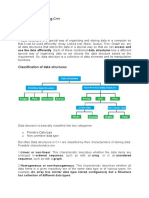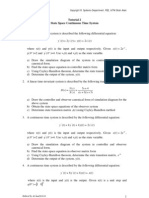0% found this document useful (0 votes)
6 views38 pagesData Structures Lecture 1-1
The document provides an overview of data structures, explaining their importance, types (primitive and non-primitive), and applications in various fields such as databases and artificial intelligence. It details operations performed on data structures, specifically focusing on arrays, including their characteristics, types, and common operations like searching, inserting, and deleting elements. Additionally, it discusses the relationship between arrays and pointers in C++, emphasizing their significance in efficient memory management and data manipulation.
Uploaded by
mntsr80awdailCopyright
© © All Rights Reserved
We take content rights seriously. If you suspect this is your content, claim it here.
Available Formats
Download as PDF, TXT or read online on Scribd
0% found this document useful (0 votes)
6 views38 pagesData Structures Lecture 1-1
The document provides an overview of data structures, explaining their importance, types (primitive and non-primitive), and applications in various fields such as databases and artificial intelligence. It details operations performed on data structures, specifically focusing on arrays, including their characteristics, types, and common operations like searching, inserting, and deleting elements. Additionally, it discusses the relationship between arrays and pointers in C++, emphasizing their significance in efficient memory management and data manipulation.
Uploaded by
mntsr80awdailCopyright
© © All Rights Reserved
We take content rights seriously. If you suspect this is your content, claim it here.
Available Formats
Download as PDF, TXT or read online on Scribd
/ 38


































































































